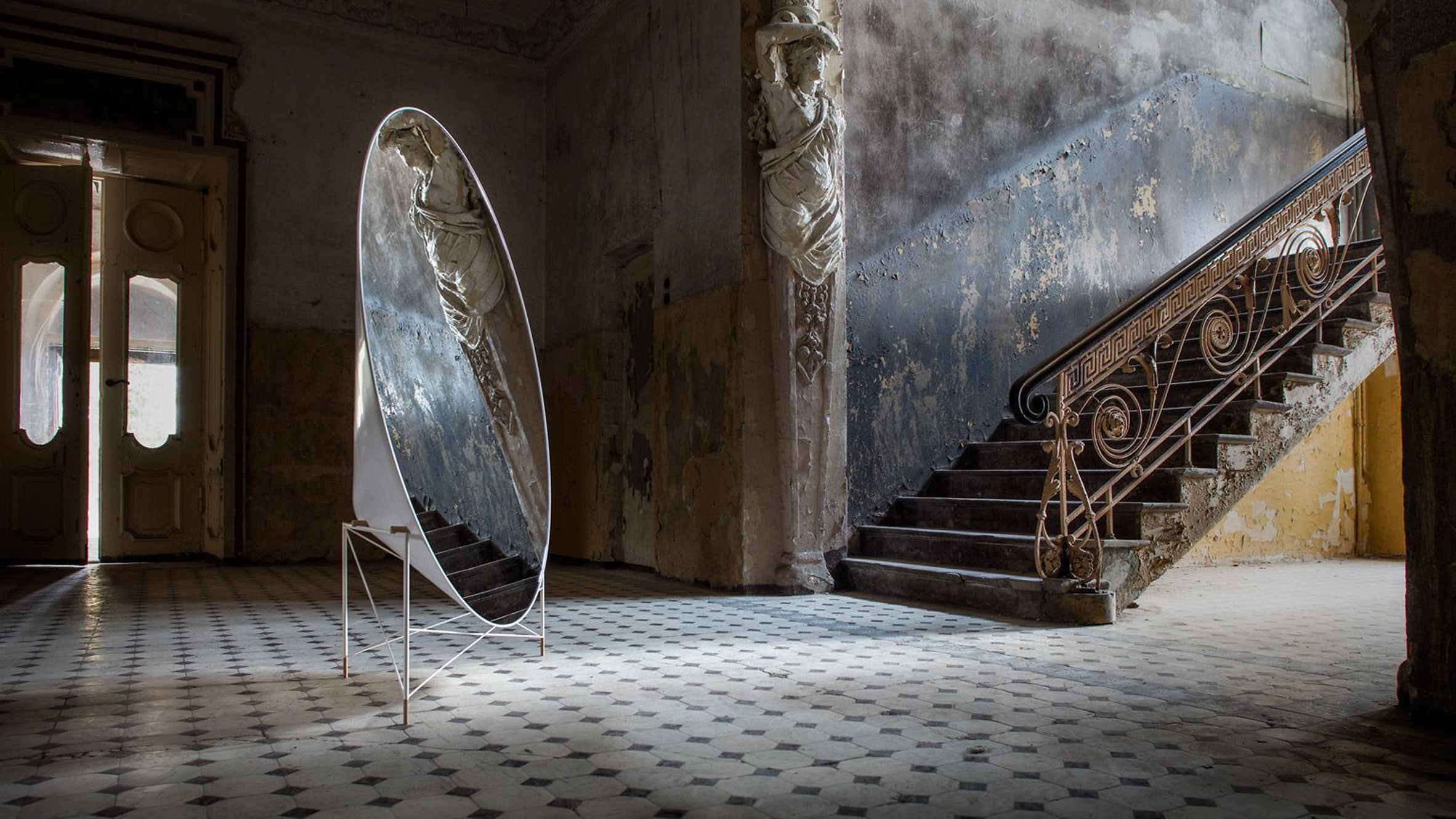The freestanding piece, which was created for design brand jot.jot, is intended to combat ideas of the mirror as “just a flat object on the wall”. Lithuanian studio Heima’s Mudu mirror has a sculptural silhouette when viewed from any angle. Seen from the front, Mudu appears like a common oval-shaped mirror, but the side view reveals its tapered back – which is made from Corian.
Wooden pegs set in the side of the mirror’s shell allow it to rest atop a painted steel framework, which also has wooden accents at the base of its legs. The studio used computer numerically controlled (CNC) technology to produce a mold for the mirror’s conical shell. Corian was then heated till flexible, and placed into the conical mound with a vacuum press. The mirror’s unusual shape is designed to be “observed from all sides”, with its otherwise “neutral” appearance aimed at fitting into all kinds of interiors, whether classic homes or industrial lofts.
The designers approached it as a piece of furniture rather than a house accessory. Therefore it naturally became a freestanding volumetric object. The volume that was given to the mirror is almost 100 per cent unnecessary from the point of view of function, and that’s what we like most about it. The mirror’s unusual shape is designed to be “observed from all sides”, with its otherwise “neutral” appearance aimed at fitting into all kinds of interiors, whether classic homes or industrial lofts.

